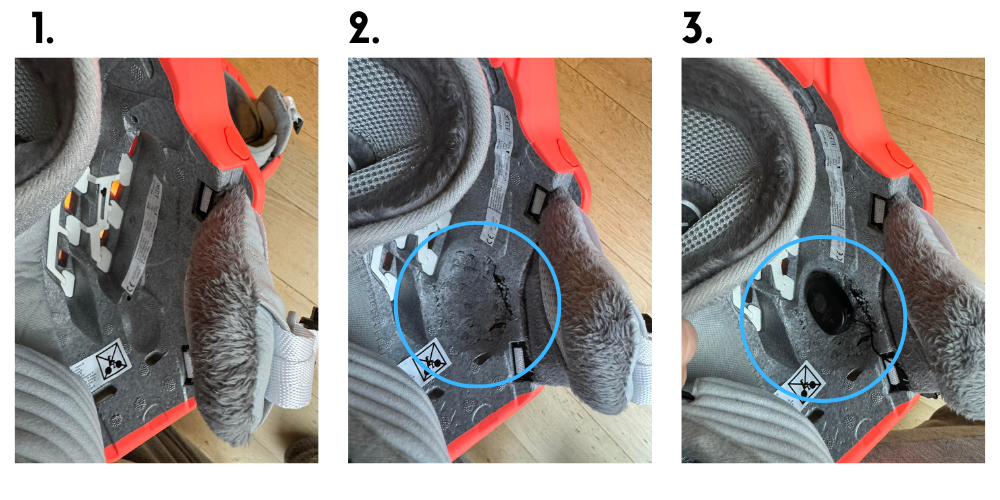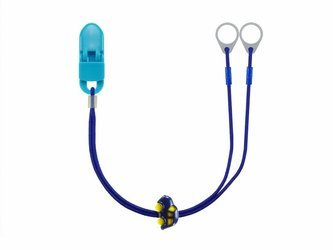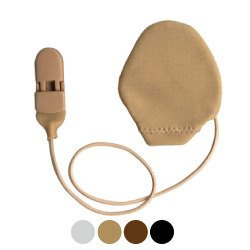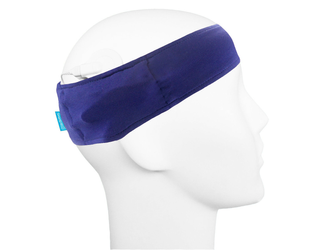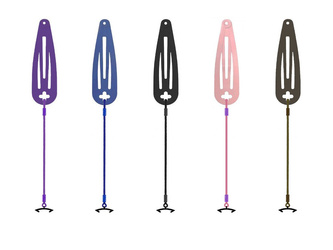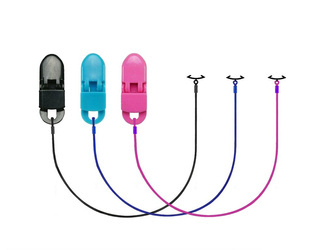Can you ski or snowboard with a cochlear implant? The story of my daughter named Helenka

As Helenka's mother, I would like to tell you about our experiences with her impaired hearing and her passion for snowboarding. Helenka is 11 and she has had two cochlear implants for a decade. She uses MED-EL Rondo 3 audio processors, which play a crucial role in her everyday life by enabling her to fully participate in the world of sounds.
First steps on the ski run
When Helenka was 9, I decided to take her on the ski run for the first time. It was a thrilling adventure, we had our doubts but, at the same time, we were very excited. Even though I was concerned about her safety, particularly in relation to her cochlear implants, I decided to let her explore the joy of snowboarding.
I knew that winter sports will be great fun for her but also an important part of her physical and social development. I wanted Helenka to be able to experience the same satisfaction from outdoor activity as other children. Even though every parent is naturally concerned about the safety of their child, particularly if the child has additional needs, just as Helenka does, it was crucial for me not to set limits for her but to let her discover and enjoy her passions.
Adjusting the equipment
Initially, the challenge was to find the right helmet for Helenka, one which would protect her head and also be compatible with her cochlear implants and audio processors.
Throughout the first days, we were using a standard ski helmet but it soon became apparent that it was not a good fit. The helmet was pushing on the audio processors, which was causing discomfort at the location of the implants and increasing headaches. It was at that moment, when our doubts and uncertainty as to her ability to enjoy snowboarding came to surface. I was wondering if it was safe to continue and if the risk of damaging the implants was not too high.
Helmet modification
Once I realized that a standard ski helmet does not provide the desired level of comfort and safety for Helenka, I decided to take matters into my own hands. The key was to make the helmet right for my daughter's specific needs. I grabbed my tools and got on with the work by cutting out cavities in the internal lining of the helmet so that the audio processors could fit into them.
This simple modification turned out to be a real breakthrough. The cavities in the lining were perfectly matched to the size and the shape of the processors, which instantly improved both the comfort and the safety of Helenka as she was riding. At that point, she was able to focus on learning to snowboard and having fun without worrying about the discomfort or the risk of damaging her hearing aid. (see below for a description of how to modify a helmet + photos).
The most memorable moment was when she put on her modified helmet for the first time. It put a big smile on her face and I could see both joy and relief in her eyes. At that moment, I knew I had made the right choice. Finally, Helenka could feel comfortable and safe and the way she could enjoy snowboarding with her new, modified equipment, was priceless for me.
This experience taught me that sometimes even small changes can have a dramatic effect on the quality of our children's lives. The modified ski helmet not only improved Helenka's safety but it also allowed her to enjoy her favourite outdoor activity without any limitations. This only strengthened me in my conviction that we, as parents, can create solutions which will help our children enjoy their life to the fullest regardless of the challenges they face.
Additional safety feature
Additionally, Hela uses special hairpin hooks to make sure she does not lose her Rondo 3 audio processors when snowboarding. These small and yet essential accessories are available at www.smartear.pl. The hairpin hooks are available in different versions, depending on the length of one's hair; clip-on hooks, attached to an item of clothing, are also available.
How to cut out cavities for your audio processors in your ski helmet lining?
Helenka uses a standard, adjustable ski helmet with lining from Head.
1. Use a marker pen to mark the location of the processors. This is an important step, as the exact location of the cochlear implant on one's skull may vary from one user to another.
2. Use a sharp knife to insert the blade underneath the lining layer and precisely cut out the cavities. This stage requires precision - you want to leave the helmet's structure intact and, at the same time, you want your cavities to provide enough room for the audio processors. The cavities should provide some extra headroom for the processors in order to ensure the user's comfort and eliminate pressure on the processors.
Based on our experience, I know that children with cochlear implants can safely enjoy winter sports. It will require some extra work but the results are definitely worth it. Helenka's example shows that with the right support, children with impaired hearing can overcome their limitations and enjoy their life to the fullest.
The above story proves that with the right attitude and support, every child, regardless of their limitations, can enjoy the activity they like.
